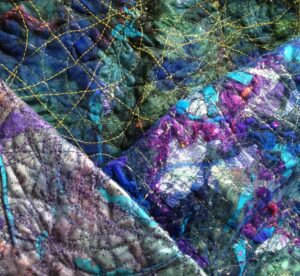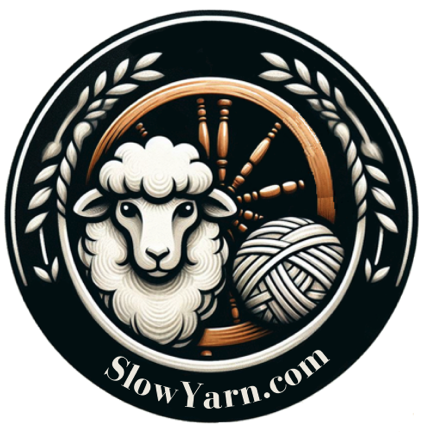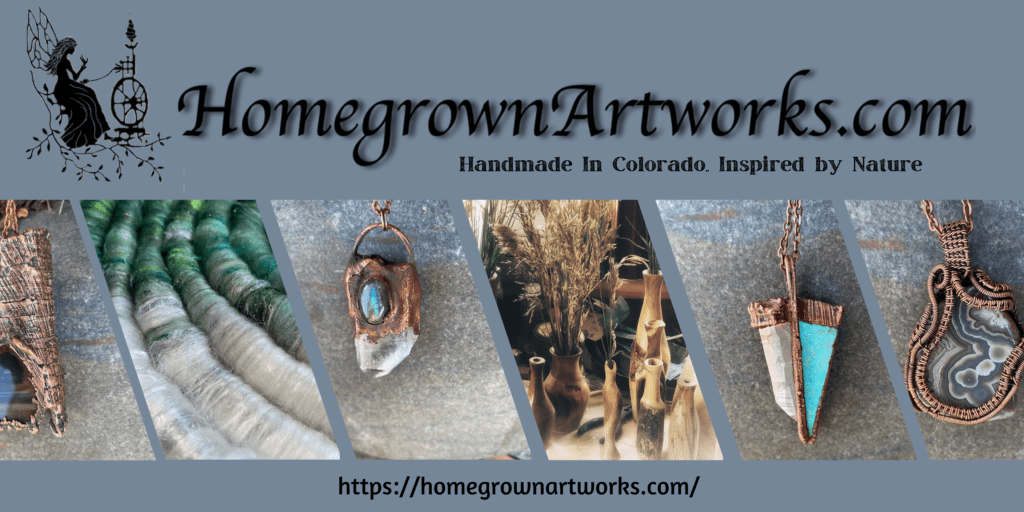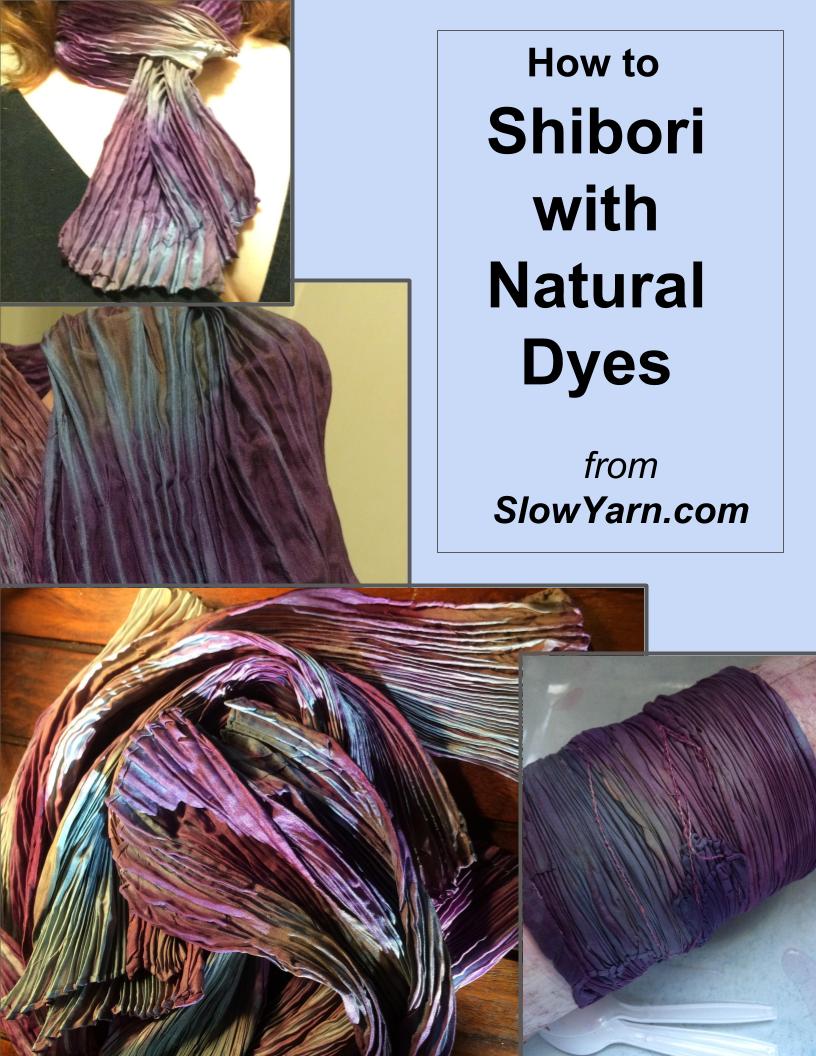 What is “Fiber Art”?
What is “Fiber Art”?
There has been a huge increase in the number of people lately who knit or crochet or quilt. Almost everyone is familiar with those skills, and we saw our grandmothers doing these things as hobbies or to help make ends meet. Modern Fiber Art goes far beyond this, though! Not only have people discovered that, thanks to the Internet, we can learn many more overlapping skills now than ever before, but that those old crafts can be elevated to a whole new level in creating Art. (You can read more about this in another article, Art. vs. Craft.)
All of the fiber arts are (pardon the pun) interwoven. Spinning, weaving, knitting, crocheting, dyeing, and more; most fiber artists don’t just do one of these. Everybody has a favorite, but they usually get inspired to try new things once they’ve mastered one. There are plenty of handspinners out there who have made beautiful skeins of yarn without a designated purpose. Beauty for beauty’s sake. They look lovely hanging from a peg on the wall or curled up in a basket. But let’s face it, you can only have so much decorative yarn sitting around. How do you use it? Let’s take a tour of some of the Fiber Arts!
SPINNING
Spinning, or “handspinning” to avoid confusion with the form of exercise, is the method of turning fiber into thread or yarn. Using either a spinning wheel or a drop spindle, the fibers are distributed evenly and twisted to form a durable, continuous thread which can be used for knitting, weaving, crocheting and more. Yarn can be made thick or thin, shiny or fluffy, or even sparkly and lumpy as a form of art. People often begin learning to spin with the idea that they will save money on their knitting “stash,” but quickly find that it is a truly enjoyable craft on its own. Spinning is so relaxing for most people that it can be considered a form of meditation.
WEAVING
Weaving is simply the creation of fabric by placing threads over and under each other in a pattern. Most kids have tried weaving paper strips or making pot-holders with loops, and that is a great way to get the idea! More complicated looms can help the weaver create textural patterns on the surface of the fabric by controlling how many threads go over or under.
KNITTING
Most people think of knitting when they hear the word “yarn,” with Grandma in her rocking chair, ball of yarn in her lap and needles clicking between her fingers. Knitting is, by far, the most popular of the Fiber Arts. It’s not just for Grandma anymore, either! Celebrities and teenagers have joined the knitting party, and there are increasing numbers of men who knit.
If you’re new to knitting, check out our page “What Is Knitting?”
CROCHET
Crochet is similar to knitting, with one continuous strand of yarn looped through itself to create a fabric surface. It only uses one tool– the crochet hook. I lot of people find it easier to learn than knitting, and kids will often pick up crochet as their first Fiber Arts skill. Crochet takes more yarn than knitting and makes a thicker fabric with a more textured surface. It is adaptable to some really creative techniques, such as lace-making and scrumbling.
EMBROIDERY
One of the oldest forms of Fiber Art is Embroidery. Painting with thread carried handwork to levels of artistic creativity that rival painting and sculpting for their beauty and expression. Embroidered work served every function from decorating clothing to mending tears to documenting historic events, such as the Bayeux Tapestry.
FELTING
Felting with wool has become a very popular form of Fiber Art in the past few years. Needlefelting, Nuno felting, knitted wool yarn felting, and wet felting are all varieties of the same basic idea: Getting protein fibers to tangle together in a controlled way to form a solid fabric surface. Wet felting is a great technique to teach kids, but avoid needlefelting until they are old enough to handle the very sharp needles.
OTHER FIBER ARTS
Many other forms of Fiber Art don’t include wool or yarn, but certainly do involve the manipulation of fibers. Here are a few:
QUILTING
Because quilting is not made with yarn or fiber, it is in a category of its own for fiber art. But many of the same techniques used with yarn can be applied in quilting as well. Dyeing, hand painting, and color application are vital elements in a beautiful modern quilt. Texture and shading are important as well. The creative use of yarn or dyed fabric in a quilt can make it stand out as a stunning painting in cloth that Grandma would never have dreamed of!
SURFACE EMBELLISHMENT
A broad category which covers beading, fabric painting, embroidery, or some combination of those, surface embellishment is any way of changing the surface of a textile to make a more decorative or artistic end product.
BEADING
Beading, other than simple stringing, is closely intertwined with other fiber arts. Used as surface embellishments, as a form of off-loom weaving, or as a sculptural medium, beading with all sizes of beads has blossomed into a unique form of Fiber Arts.
LACEMAKING
Traditionally linen thread, made from the flax plant, has been used for lacemaking of all types. The crispness of the thread keeps the lacy holes open for an airy, clean look. Linen can be bleached to the snowy white that most people associate with lace.
TATTING
Another lacemaking form, tatting deserves its own category. It is actually a series of knots in thread, similar to the larger technique of macrame. Because a great deal of wear happens on the thread as the core is pulled through the knots, the thread used must be very smooth and durable. Mercerized cotton is by far the best thread for tatting.
BASKETRY
Weaving, twining, twisting, tying… all of these actions are in common with all fiber manipulation. Basketry appeals to the same primal instincts that handspinning does. It is useful. It takes “nothing” and makes it “something.” It is beautiful. It is meditative. It is creative, and that need to create is universal in human beings. Besides, where else are you going to store all your handspun yarn?
All baskets are handmade. No machine has been invented yet which can weave a basket. Anybody can make a simple basket, with just some basic instruction, but to make a beautiful and durable basket there is some considerable skill involved. Every twig or vine comes from a plant and has its own characteristics. The materials are not always cooperative with the basketweaver, so she must be always adapting in ways machines cannot.
PAPERMAKING
Not a yarn or fabric at all, papermaking still deserves a place in any discussion of handmade fiber art. Most of the cellulose fibers (not wool) can be used for papermaking. Cellulose has an almost magical property of clinging to itself, fiber to fiber. When the long strands of cellulose fiber are broken down, suspended in water, then redistributed and dried– voila! Paper is made. This means that anyone raising their own fibers for handspinning can also use some of the shorter waste to make a beautiful, textural paper that can be the basis for some unique art projects.
Comments are always welcome here at SlowYarn! Tell us what you think, share your ideas, or comment on the content. Or you can contact me directly at Kelley@SlowYarn.com.
Thanks!
–Kelley
Copyright © 2013-2023 Kelley Adams. All rights reserved.
All text, photos, and graphics are the property of Kelley Adams, unless credit is given to an alternative source.










